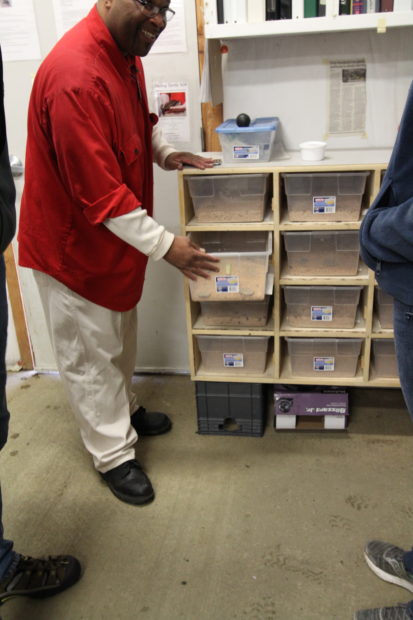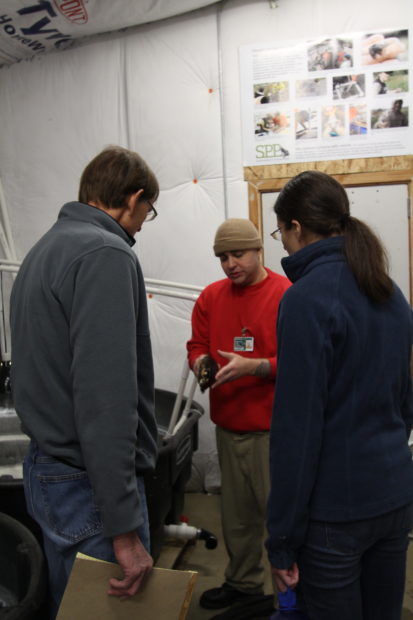Text and photos by Jessica Brown, SPP Turtle Program Coordinator
After several months of planning, a new wildlife conservation program at Cedar Creek Correctional Facility will soon be up and running. We are excited to team up with biologists from the U.S. Forest Service to implement the woodpecker nest monitoring program. The program is mainly a research project: technicians review video footage of endangered woodpeckers at their nests, and document activities of animals that may depredate the nest.

Partners in endangered species conservation for Cedar Creek Corrections Center, from left to right: Technician, John Fitzpatrick, Superintendent Douglas Cole, Loretta Adams (SPP Liaison), Philip Fischer (U.S. Forest Service), Kelli Bush (SPP Co-Director), Teresa Lorenz (U.S. Forest Service), Technician William Anglemyer
In part to allow the new program, Cedar Creek’s conservation efforts will be served by a larger group of incarcerated technicians, adding about 6 more individuals to the existing two turtle technicians; the larger group will rotate through turtle and woodpecker programs, plus a future aquaponics program. Woodpecker technicians in the prison will receive similar training and education to that of undergraduate students who perform the same work. They will learn about topics such as wildlife species identification, ecology, conservation, and data documentation.

New turtle technician, Mr. Fitzpatrick leads a tour of the turtle facility at Cedar Creek.
Last month, U.S. Forest Service biologists, Teresa Lorenz and Philip Fischer were able to visit the Cedar Creek facility and turtle technicians treated them to a tour of the western pond turtle program. The newest turtle technician Mr. John Fitzpatrick did a great job of leading his first tour for an outside group. Mr. Fitzpatrick, the first incarcerated winner of a Mike Rowe Foundation scholarship, has been an excellent addition to the turtle team; he brings an infectious, positive attitude, and zest for learning. We are thankful for the animal handling skills, training, and wealth of knowledge he is receiving from veteran turtle technician Mr. William Angleymyer.

Mr. Fitzpatrick explains the mealworm rearing setup. The mealworms are a source of food for the turtles.
Cedar Creek currently has three resident western pond turtles, including one healthy turtle that was found by someone on the side of the road. Because this turtle is disease-free, he is being kept separately from the other turtles—in quarantine—until he can be released in the spring. The three turtles at Cedar Creek will be joined by 7 more by the end of November.
Training for the woodpecker nest monitoring project will take place in November where we will be joined with newly-hired technicians and members of the horticulture team.

Mr. Anglemyer shows the healthy turtle to Teresa and Phil from the U.S. Forest Service.

Turtle technicians Mr. Fitzpatrick and Mr. Anglemyer pose with the healthy western pond turtle.

SPP Turtle Program Coordinator, Jessica with turtle technicians, Mr. Anglemyer and Mr. Fitzpatrick





































